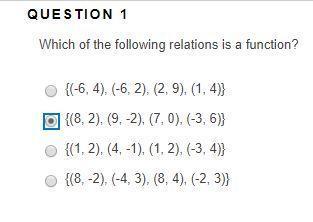
Mathematics, 14.04.2020 23:56 summerjoiner
In a large clinical trial, 391 comma 407 children were randomly assigned to two groups. The treatment group consisted of 196 comma 153 children given a vaccine for a certain disease, and 26 of those children developed the disease. The other 195 comma 254 children were given a placebo, and 83 of those children developed the disease. Consider the vaccine treatment group to be the first sample. Complete parts (a) through (d) below.
a. Assume that a 0.01 significance level will be used to test the claim that p 1less thanp 2. Which is better: A hypothesis test or a confidence interval? A hypothesis test is better.
b. In general, when dealing with inferences for two populationproportions, which two of the following are equivalent: confidence interval method; P-value method; critical value method? Upper P dash value method and critical value method are equivalent, in that they will always lead to the same conclusion. Both of these methods use a standard deviation based on the assumption that the two population proportions are equal, whereas the other method uses a standard deviation based on estimated values of the population proportions.
c. If a 0.01 significance level is to be used to test the claim that p 1less thanp 2, what confidence level should be used? 98%(Type an integer or a decimal.)
d. If the claim in part (c) is tested using this sample data, we get this confidence interval: negative 0.000417less thanp 1minusp 2less thannegative 0.000168. What does this confidence interval suggest about the claim? Because the confidence interval ___ (does not contain or contains) ___(0, the pooled sample proportion, the critical value, or the significance value) there (appears to be or does not appear to be) a significant difference between the two proportions. Because the confidence interval consists ▼ ▼ ___ (only of values greater than, of values both less than and greater than, or only of values less than) (0, the significance value, critical value, or the pooled sample proportion) it appears that the first proportion is ▼ (greater than, less than, or not significantly different from the second proportion). There is ▼( sufficient, or insufficient) evidence to support the claim that the rate of polio is less for children given the vaccine than it is for children given a placebo.

Answers: 3


Another question on Mathematics

Mathematics, 21.06.2019 15:10
Figure abcde is a regular pentagon. segment ae is located at a (2, 1) and e (4, 1). what is the perimeter of abcde? 4 units 6 units 8 units 10 units
Answers: 1


Mathematics, 21.06.2019 21:30
If 1.4% of the mass of a human body is calcium, how many kilograms of calcium are there in a 165-pound man? 1.0 kg ca 5.1 kg ca 1.0 x 102 kg ca 5.1 x 102 kg ca
Answers: 1

Mathematics, 21.06.2019 22:30
What is the graph of the absolute value equation ? y=|x|-5
Answers: 1
You know the right answer?
In a large clinical trial, 391 comma 407 children were randomly assigned to two groups. The treatmen...
Questions

Mathematics, 09.09.2020 14:01

Mathematics, 09.09.2020 14:01

Mathematics, 09.09.2020 14:01





Mathematics, 09.09.2020 14:01


Mathematics, 09.09.2020 14:01

History, 09.09.2020 14:01


Mathematics, 09.09.2020 14:01

Chemistry, 09.09.2020 14:01

Social Studies, 09.09.2020 14:01

Mathematics, 09.09.2020 14:01

Arts, 09.09.2020 14:01







